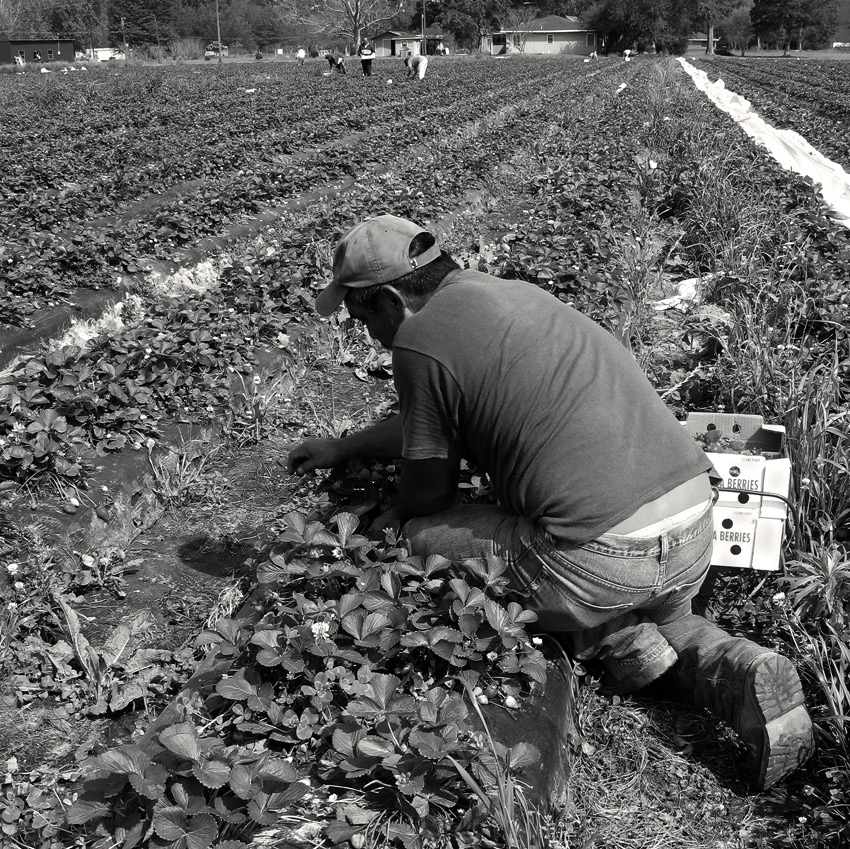Like many western Canadian farmers, Chris Raupers has struggled at times when it comes to finding experienced workers to fill positions on the 6,500-acre grain farm he operates near Cardale, Man., with his wife, Lindsey, and their three children.
He’s hardly alone in that regard. A report released by the Canadian Federation of Independent Business (CFIB) this past November revealed labour shortages are having a profound effect on Canadian agri-businesses, including many family-operated farms.
The CFIB report showed nearly three-quarters (74 per cent) of those business owners are working more hours to make up for a lack of staff and almost half of them (48 per cent) have had to turn down sales or contracts due to labour shortages.
Read Also

Cancer agency reclassifies another herbicide ‘probably carcinogenic’
The WHO’s cancer research agency has now put atrazine, a herbicide well known to corn growers, in the same potential-hazard category where the agency put glyphosate.
Raupers acknowledges the shrinking pool of skilled farm workers has forced him and his wife to become more creative when it comes to filling vacancies on their farm.
“I think no matter the industry, we’re all in the same boat. We’re all looking for labour and regardless of whether it’s skilled or unskilled we’re willing to do the training. We’re all looking for and reaching for new measures to fill positions,” said Raupers during a telephone conversation in early February.
Raupers spoke about the challenges of hiring seasonal farm employees during a presentation at Manitoba Ag Days, held Jan. 17-19 in Brandon, Man. The panel discussion focused on alternative strategies that can be used to overcome farm labour shortfalls.
For Raupers, the solution to that labour shortfall has been recruiting farm workers from Europe, which makes perfect sense based on his background. Raupers grew up in Germany before moving to Canada with his parents and two brothers in 1999. They settled in Cardale where they took over a farm that had been owned by his uncle.
Almost immediately, his father began using his contacts in Germany and other European countries to find seasonal labour. Eventually, they began finding new overseas employees by word of mouth. Raupers kept up the practice after he took over management of the farm from his father about a decade ago.
“It literally kind of snowballed from there and we never really stopped,” he said during the panel discussion.

Raupers typically employs one or two full-time local workers during the season and augments the team with three or four employees who have been brought in from overseas. He said one of the advantages to using overseas workers is they have an outstanding work ethic.
“I found I got more work done over a long period of time with an international crew than I have with a crew of local guys because they’re with me all of the time,” he said. “Local guys want to work too, but they might have a small farm of their own or family and other things they look forward to two or three days of the week. The international crew typically doesn’t have anybody over here, so they look forward to working with you.”
Raupers, who plans to bring in two workers from Switzerland and Austria this coming season, said overseas workers also tend to be extremely dedicated to an employer.
“They’re not out looking for the next best thing or the next dollar because they have become comfortable with their commitment before they come here,” he said by phone.
Not without challenges
However, Raupers acknowledged that bringing in temporary workers from Europe isn’t without its challenges. For example, many aren’t familiar with the topography of the Prairies, which can make operating tractors and other machinery problematic. Some may also require more training or supervision than local workers if they are new to Canada and unfamiliar with management practices here, he added.
“I would emphasize that you are going to be doing more training and babysitting in the sense that these people don’t know the area, the (local) people, the way you do things, your customs and so on,” he said by phone.
“I think it falls into the category of being a good boss, manager and leader, which means you take care of your people in all aspects. You sometimes run into similar training issues with domestic labour too. You have to be more watchful than when you get the old boy from down the road who has been farming forever, and you’ve rented his land and he knows how to do everything.”

Of course, hiring overseas workers was virtually impossible during the height of the COVID-19 pandemic. That forced Raupers to dig a little deeper into his wallet to hire domestic workers until travel restrictions were eventually eased.
Domestic problem, international solution
Anita Warriner is another proponent of utilizing overseas workers to address the ongoing farm labour shortage in this country. She is the executive director of International Rural Exchange Canada (IRE Canada), a non-profit agency that helps Canadian and foreign young adults take part in work placements in a variety of industries, including the agricultural and horticultural sectors, in more than 30 other participating countries. She spoke as part of the panel discussion on alternative farm labour strategies at Ag Days in Brandon.
Warriner first became familiar with IRE Canada (awaytowork.ca) in 2003 when she and her husband began hosting individuals through the program on their farm. Participating individuals between the ages of 18 and 35 can apply for three types of work permits through the agency:
- A working holiday allows participants to work for multiple employers.
- A young professional provides industry-specific training with a single employer for those wishing to use or enhance existing training.
- An international co-op functions in a similar way to a post-secondary co-op program or internship.
Work permits granted through IRE Canada are Labour Market Impact Assessment exempt, meaning they require less paperwork than most permits. They are also non-renewable.
Warriner said the program is open to individuals from any qualifying country that has an agreement with Canada through the Youth Mobility Program. More than 36,000 young people have come to Canada through the program since its inception from as far away as Australia, New Zealand, Norway and Switzerland.

One of the benefits of bringing in farm workers through IRE Canada, Warriner said, is that many of them are highly skilled. In Europe, for example, farming is considered a skilled trade and young farmers are required to take part in vocational education and training regardless of whether they grew up on a farm or not. In addition, many of the people who take part in IRE Canada bring not only a high skill set, but an outstanding work ethic, she said.
“Generally, the work ethic is astonishingly high for the people who are coming here,” Warriner said. “Many of them have a lifelong dream of coming to Canada. It is very common for people to want to come here because of the wide open skies and nature. The big fields are a big draw for people coming through the program.”
Employers who hire an individual through the program must provide food, a place to stay or arrange housing elsewhere, as well as an agreed upon wage in most cases.
Warriner said one of the keys to employers having a positive experience through the program is being patient when it comes to language differences. Although IRE Canada requires participants to have basic English skills, some struggle with the language more than others, she added. She emphasized that cultural exchange is a key element of the program so “people learn about Canada so that when they go home … they speak well of Canada, they think well of it, and it improves international relations over the course of time.”
Wealth of experience
Martie Kruger immigrated with her family to Canada from South Africa in 2008. She now runs her own immigration consultancy business in Brandon that is focused on agriculture and works with both employers and individual workers. She was part of the panel discussion on alternative farm labour strategies at Ag Days.

Most of the individual workers Kruger assists are experienced farmers or farm workers from South Africa who are looking to move permanently to Canada. She said they are anxious to relocate because of the current political climate in South Africa and electricity shortages that make it virtually impossible to continue operating farms in many parts of the country.
Kruger said one of the advantages to bringing in farm workers from South Africa is the fact that many of them have a wealth of experience in farming and their skills are easily transferable to Canada. Most are also fluent in English, she added, since it’s a compulsory second language for South Africans through to Grade 12.
In addition, South African farm workers tend to remain with an employer longer, she said.
“Most of the people that I work with, they tend to stay with employers even after they receive their permanent residency,” she added.
Kruger cautioned that one of the downsides to bringing in workers from South Africa is that it can take time. Although it depends on an individual’s circumstances, it often takes six or seven months for a prospective employer to complete all of the necessary paperwork and procedures.
Her advice to employers is to be aware of the fact that many newcomers struggle once the “honeymoon” phase with their new home and job is over, and they may require some emotional support to deal with those early struggles.
“I can almost guarantee if you work through those first couple of months of hiccups and difficulties, you might end up having a worker for many years and not just one or two years,” she said. “Talk to them, discuss things. Communication is very important to making permanent immigration a success.”
















